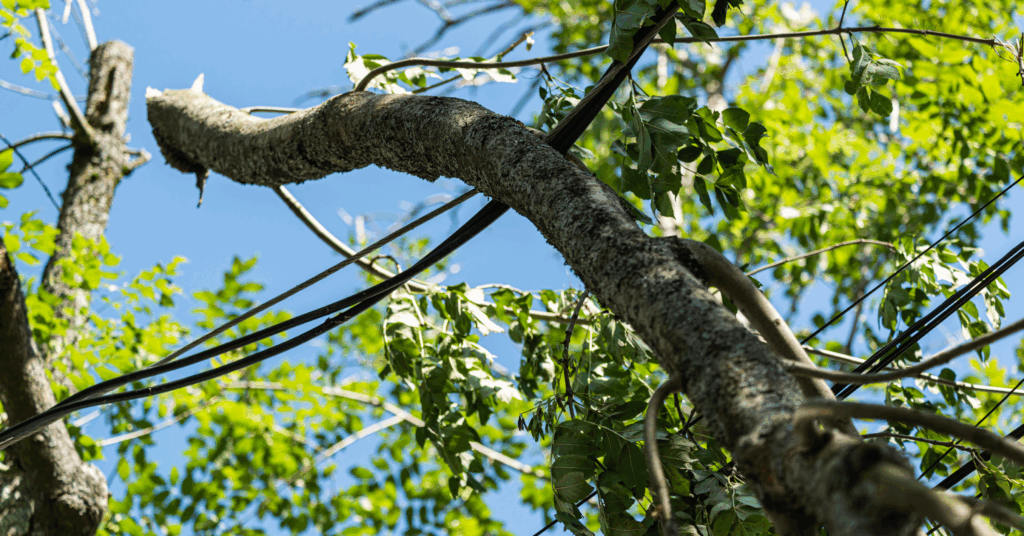What to Do About a Tree Leaning Toward Your House: Risks, Warning Signs, and Safe Solutions

Noticing a tree leaning on your house or tilting in that direction can be alarming. While not every tree leaning on house is dangerous, some warn of serious risks to your roof, safety, walls, or foundation. In many cases, immediate tree care, tree trimming, or full tree removal is needed. By learning what causes trees to lean, how to spot danger signs, and when to call a professional tree service, arborist that you can protect both your property and peace of mind. For readers looking for quick solutions, you can skip to content below to find safety tips and removal options right away.
Why Do Trees Lean?
Not all leaning is harmful. Many trees bend naturally as they grow toward light or compensate for uneven conditions. However, when combined with structural weakness or root instability, mature trees and large trees are more at risk, while small trees may simply need pruning or tree care tips leaning can signal potential hazards. Knowing when to choose tree trimming vs. pruning is important, since the right method can prevent a small lean from developing into a costly or dangerous issue.
What Damage Causes a Tree to Lean?
- Root instability from shallow, damaged root systems, or rotting roots
- Soil conditions such as erosion, compaction, or oversaturation after storms
- Wind or storm stress and damage, especially on tall, exposed trees
- Competition for light, causing a tree to angle toward the sun
- Structural defects like weak joints, cracks, or trunk imbalance
Understanding Help Tree Growth Habits and Tree service

Trees adapt their growth to surroundings. A gradual lean developed over years may be stable, while a sudden lean almost always indicates a problem. An experienced tree guy or certified arborist knows this difference is key in judging whether a leaning tree near your is safe or needs professional tree services. This understanding is part of the science of arboriculture, which studies tree health, structure, and safety.
How to Tell if a Leaning Tree is Dangerous
The real concern isn’t whether a tree problems — it’s whether the lean makes failure likely, and not calling the professional and do the DIY tree removal .
When Do Leaning Trees Become Dangerous?
- If the lean changes suddenly
- If roots appear lifted, cracked, or exposed
- If there are splits or cracks in the trunk
- If the tree leans directly toward a home or power lines
Will a Leaning Tree Eventually Fall Near Power Lines?

Some leaning trees remain structurally sound for decades. Others, especially those with decayed trunks or unstable root systems, may fail in the next heavy fall storm. The lean itself isn’t the risk — it’s the health of the tree and the direction of the lean that matter most.
What to Do If Your Tree Is Leaning Towards Your Home?
A tree leaning toward your house deserves special attention. Beyond the risk of falling, even branches rubbing against siding or roofs can cause costly damage.
Is the Tree Close to Your House a Disaster Waiting to Happen for Your Safety, and Needs tree care or tree work ?
Trees within striking distance can damage property, injure occupants, or complicate insurance claims if ignored. Location is one of the strongest factors in evaluating risk.
Warning Signs to Watch Out For
- New cracks in the ground or trunk
- Hollow or decayed spots at the base
- A lean that appears to worsen after storms or high winds
- Small Trees Branches encroaching on the roofline
Can You Save a Leaning Tree with Pruning or Tree Removal ?
other tree species whose weak or those with only mild leans can sometimes be corrected with staking, help stable cable, or soil support. Seasonal timing also matters. For example, winter pruning often reduces stress on trees and lowers the risk of disease, making it the safest time to address leaning or unstable growth. That said, older, larger trees with severe lean or damaged roots usually cannot be “fixed” safely. An arborist’s inspection will determine the soil, and if the tree damage whether reinforcement or tree cutting is the best option.
When Should You Remove a Leaning Tree with an arborist?

If the tree is leaning on your house, threatening powerlines, or showing signs of root failure, it’s time for tree removal. Professional tree services often use a crane for dangerous removal jobs to keep workers and homeowners safe.
If you see these, call for an arborist inspection right away.
Questions to Consider When Deciding to Take Down a Tree
- Has the lean developed suddenly or worsened recently?
- it is a obvious weak branch or dead branches ?
- Is the root system visibly compromised or are tree roots exposed?
- Would the tree strike your house or other structures if it fell?
- Is decay or hollowing, stump damage present in the trunk?
If several of these answers are “yes,” delaying tree removal could put your home and safety at serious risk.
Final Thoughts
A tree leaning on a house is never something to brush off. It’s a threat to safety, property, and peace of mind. Sometimes tree care tips or pruning will fix the problem. Whether it’s reinforcing a younger tree or removing one that’s become hazardous, consulting a certified arborist services is the safest way to protect your property.
Being proactive now can save you from emergency removal damage repairs and, sleepless, storm damage, nights every time the wind picks up.
Don’t wait until a leaning tree becomes a costly emergency. Protect your home and family by calling a certified professional today. Whether you need expert advice, safe removal, or ongoing care, our team is here to help. Schedule your inspection and get a free estimate now. Check out our past tree cutting and tree removal projects in your city:
